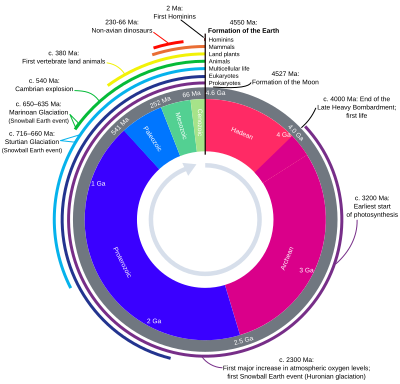This unit was about evolution and how it occurs. Evolution is a process where mutations that are favorable for an environment become more common. This happens because organisms with favorable mutations are more likely to reproduce. We know that natural selection has occurred if there is an overall shift in the allele frequency of a population.
 In this picture, a form of selection that favors one extreme of a trait over medial and the other extreme. For example, if large claws helped a lion survive, then directional selection could occur and make large claws a common trait.
In this picture, a form of selection that favors one extreme of a trait over medial and the other extreme. For example, if large claws helped a lion survive, then directional selection could occur and make large claws a common trait. Another way we can know evolution has occurred and whether two species have a common ancestor is by looking for homologous structures. These are structures like bat wings and whale fins that have different functions but came from a common ancestor's structure.
Another way we can know evolution has occurred and whether two species have a common ancestor is by looking for homologous structures. These are structures like bat wings and whale fins that have different functions but came from a common ancestor's structure. Evolution takes place over long periods of time. The earth has been around for 4.6 billion years and basic life didn't pop up until 3.8 BYA. During the Cambrian explosion, 542 MYA, most eukaryotic phylums that we are familiar with popped up. After this event, we have a mostly clear fossil record through which we can trace evolutionary paths. What is really surprising is that H. Sapiens Sapiens only evolved 200,000 years ago. This is a blink-of-an-eye ago in geologic terms, meaning that we aren't as significant as we like to think of ourselves as.
Evolution takes place over long periods of time. The earth has been around for 4.6 billion years and basic life didn't pop up until 3.8 BYA. During the Cambrian explosion, 542 MYA, most eukaryotic phylums that we are familiar with popped up. After this event, we have a mostly clear fossil record through which we can trace evolutionary paths. What is really surprising is that H. Sapiens Sapiens only evolved 200,000 years ago. This is a blink-of-an-eye ago in geologic terms, meaning that we aren't as significant as we like to think of ourselves as.I want to learn more about the relationship between the different ways of speciation and natural selection because it is not completely clear to me yet. I'm very interested in the classification of organisms so I want to find out more about phylogenetics.
In my Unit 7 reflection, I talked about being assertive. The survey found that assertiveness is my dominant trait and aggressiveness is strong as well. In the geologic timeline project, I have been very assertive and made sure that things got done in the best & most efficient way possible. However, I was also quite aggressive in convincing my groupmates to do what I thought was best. I was conscious of my words and actions, which allowed me to only use aggression when trying to get something done. In my next group project, I will try to be more accepting of my teammates' thoughts and ideas.








